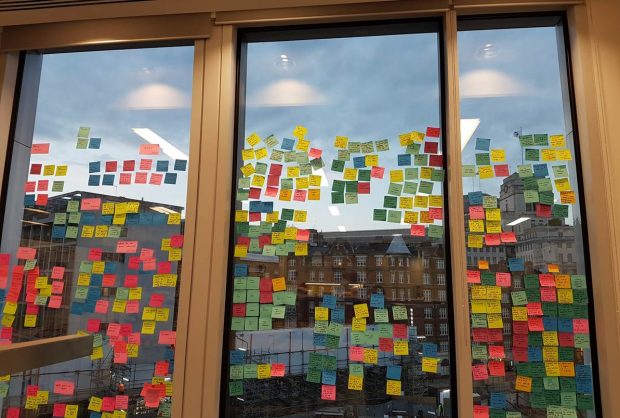Continuing our series looking at how policy and non-digital teams are using digital tools and approaches to undertake their work, we have a guest post from Kavita, from the Obesity, Food and Nutrition Team here at DHSC on her role as part of a Discovery. Ben Showers (Digital Assurance Lead).
It was a recent DHSC intranet article that taught me digital delivery is one of the identified areas with the biggest gap between current skill sets and the skills the Department will need in the future. Working in a policy team, I’d never fully understood the relevance or importance of using digital delivery to help improve policy implementation but this was soon to change as I decided to get in touch with the Department's digital team to understand more about their offer.
As a lead contact for my policy team, I was keen to understand whether there were any products or service tools in the public domain that could be used to support my policy area. I was very much looking at this from a solutions standpoint. The digital team however flipped this idea on its head, simply by asking me to identify the users (anyone that would use this product or service) and what their user need was. While my users were as quick to spot as black and white, the concept of user needs was very much grey. The digital team emphasised the benefits of carrying out user research, especially for early stage development of policy; not only would this demonstrate we have a genuine interest in understanding what members of the public need, it would help us create or select more targeted products and services and prevent taxpayer’s money being spent on digital services that don’t succeed.
This idea reached common agreement between both of our teams and we soon entered into a user research “Discovery phase” to identify user needs.
This began with a scoping session to clearly outline the policy context, our goals, our scope and who our users were. There was a constant two way exchange of information and learning, both to bring the digital team up to speed with our policy area and for the policy team to become accustomed to digital ways of working.
I worked with the digital team to write interview scripts for each user, ensuring the questions were objective and not directional. Both my team and the digital team prioritised time every morning to meet, to organise our day on the project management tool, Trello, which kept us on track and reminded us of our immediate and long term priorities.
We set ourselves quite tight timescales, of which required us to spend significant amounts of time cold-calling to secure user interviews using all the persuasive techniques we had. Together our teams successfully managed to organise and carry out high-quality interviews for 19 users across several locations over just a week.
When it came to analysing our findings, we needed to ensure we viewed the evidence with an open mind. We ran a speed dating type analysis session for each script with colleagues from the digital and policy team. We'd each read a script for five minutes highlighting any key points on post-it notes before rotating scripts between us. By the end, we had completely lit up two empty window spaces with blocks of colour .

From these key points, we established common themes and were able to summarise findings in a final presentation, with direct quotes to demonstrate evidence. This presentation was summarised with a conclusion and final recommendations. This was presented to both the policy and digital teams which was approved alongside all the stated recommendations for our next phase. The most important finding was that we had been able to provide evidence of user needs.
This was a significant achievement and by working closely with the Digital team, we now have strong, up to date evidence to support our aims. This phase will soon be followed by a testing phase (alpha) where the products will be tested to see whether they match the stated user needs and thinking through ways of taking it live (beta).
It’s been fantastic bringing our policy area to the digital space, now understanding our user needs and being in a strong position to choose the best solutions to meet these needs. Equally as important is we have brought the Digital delivery skills gap that much shorter. There is plenty of government advice on user research, why it’s important, and how to go about it. The Digital Health blog and a simple guide written by Dharmesh Chauhan, one of the Product Managers in the Digital team, on how to incorporate user needs in the development of your project have been particularly handy.
If you’re reading this and you’re in a policy team, why not too try and use the same offer and opportunities to build this evidence for your areas of work!